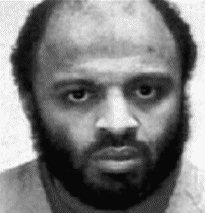
On the horrific morning of September 11, 2001, when planes crashed into buildings and fell from the sky, Zacarias Moussaoui was sitting in a jail in Minnesota facing immigration charges. Even if he had not been arrested three weeks earlier, when he raised suspicion by paying large sums to a flight training school to learn to pilot a Boeing 747 despite his never having piloted a small plane, it seems unlikely that Moussaoui would have been "the twentieth hijacker" on one of the four doomed planes. Nonetheless, largely because of the convenient fact that he was alive and in custody, the French citizen of Moroccan descent became the only person tried in an American courtroom for involvement in the 9/11 tragedy. As such, his trial came to be much more than a proceeding to determine whether one would-be terrorist would live or die: it became an opportunity for survivors and relatives of 9/11 victims to seek that elusive "closure," and an occasion for evaluating--with the benefit of revealing documents released at the trial--whether thousands of innocent lives could have been saved if bureaucrats only focused more on protecting the country than advancing their careers.
Background of the 9-11 Operation
In large part because of the Moussaoui trial, the American public knows much more than it did before about the terrorist planning that led to the history-changing morning that we all remember well. Much of that information came in the form of documents labeled "substitutions for testimony"--statements gathered from captured Al Qaeda leaders and members detained in CIA-operated detention facilities around the world. Although the people making the statements played for greater roles in 9/11 than did Zacarias Moussaoui, none are likely to ever see the inside of an American courtroom because (among other reasons) the interrogation techniques to which they have been subjected almost certainly amounted to a conviction-threatening denial of their rights under the Constitution.
The most important and revealing information about how 9-11 came together came from the captured Al Qaeda described by the U. S. government as "'mastermind' of the September 11 attacks," Khalid Sheikh Mohammed. Because of security concerns, none of the lawyers involved in the Moussaoui trial questioned Sheikh Mohammed directly, but instead were provided with a 58-page document summarizing the statements he made in a series of interviews conducted by the C.I.A.
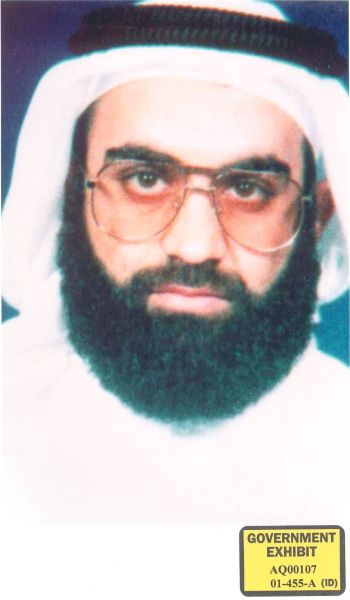
Khalid Sheikh Mohammed
According to Sheikh Mohammed, he traveled to Afghanistan in 1996 to convince Osama bin Laden to give him the money and men necessary to hijack ten planes and fly them into ten U. S. targets, five along each coast. The attack, he said, "would wake the American people up." At first, Bin Laden rejected the idea as impractical, but in 1999--a year after he publicly declared war on the United States--he changed his mind and invited Sheikh Mohammed back to Afghanistan, where he told him that "the operation now had Al Qaeda's full support." Bin Laden suggested the Pentagon, Capitol building, and White House as buildings he would like to see hit. He also suggested attacking an "economic target." By mid-1999, Sheikh Mohammed's plan had shifted: he now planned to fly five planes into East Coast targets and explode five other planes bound from Asia for the United States in mid-air above the Pacific Ocean, all about the same time "to maximize the psychological impact." Bin Laden canceled the Asian portion of the operation in the spring of 2000, deciding it would be "too difficult to synchronize" that portion of the attack with the attacks on the East Coast.
By early 2000, the first of the potential hijackers--chosen because they had visas--had traveled to the United States and were enrolled in a flight school in San Diego. Sheikh Mohammed picked out potential flight schools from a copy of the San Diego Yellow Pages he had come across at a market in Karachi. The 9/11 mastermind insisted that recruits for the operation act as much like Americans as possible, even suggesting that two potential hijackers stationed in San Diego should visit museums and amusement parks so as to appear to be normal tourists. He did not like codes or emails, and told them to "keep the calls short" and "their letters educational, social, or commercial." Meanwhile, Sheikh Mohammed continued to analyze potential targets, including nuclear reactors and places with large concentrations of Jews.
As "pilot" hijackers began arriving in the West for training, ten of the "muscle" hijackers received training at Al Qaeda's al-Matar complex, where they engaged in body building and learned how to operate explosives and seize cockpits. Trainer abu Turab, at al-Faruq camp, "had each hijacker butcher a sheep and camel with a Swiss knife to prepare them for using knives during hijackings." Not until the "muscle" hijackers reached the United States in 2001 did they know that their project involved flying planes into buildings.
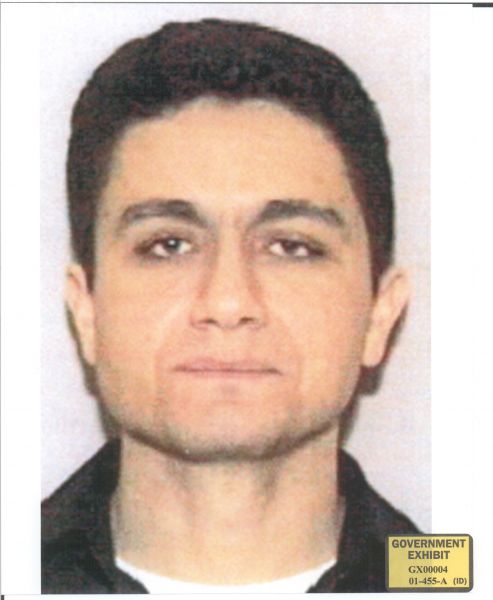
Mohammed Atta
Sheikh Mohammed selected smart and hardworking Mohammed Atta to be the chief hijacker ("emir") and gave him the authority to determine the actual date for carrying out the operation. Atta, alone among the hijackers, had met with Bin Laden and Sheikh Mohammed in Qandahar to discuss the operation. By the time Atta left for the United States, Bin Laden had settled on the World Trade Center, the Pentagon, and the U. S. Capitol (the plane that crashed in Pennsylvania in 2001 was targeted for the Capitol) for attacks. Bin Laden told Atta he could choose additional targets that might include the White House or the Sears Tower in Chicago.
Only a very few of the senior hijackers, Sheikh Mohammed said, had any awareness of the larger plot of which they were a part. Five of the nineteen operatives were involved in buying and distributing airline tickets. The other fourteen were "kept separate" and became "involved in the operation as late as possible in the process." In late August, a courier informed Sheikh Mohammed of the date chosen for the attacks.
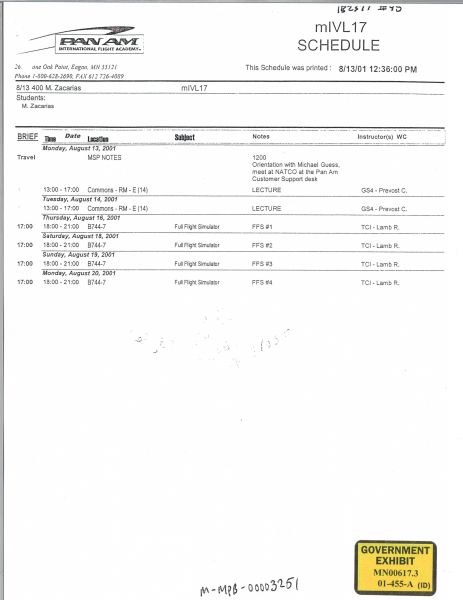
Pan Am Flight Academy schedule for Zacharias Moussaoui
As Zacharias Moussaoui enrolled in the Pan Am Flight Academy in Minnesota in 2001 (with money wired from a Al Qaeda cell in Hamburg, Germany), he was not slated to be part of the September attacks, according to Sheikh Mohammed. By that time, Atta had settled on eight targets, four to be attacked in a first round and four more in a second round. Rather than being, as widely believed at first, the "twentieth" 9/11 hijacker, Moussaoui trained to participate in what Sheikh Mohammed called "the second wave" of attacks--attacks likely to be carried out in Chicago and on the West Coast. With his French passport, he and other Al Qaeda planners believed, Moussaoui would have a better chance of slipping through what was likely to be greatly increased airport scrutiny. Security measures put in place after 9/11, however, sufficiently impressed Sheikh Mohammed that he canceled the "second wave" of attacks.
Sheikh Mohammed offered a brief written description of the approached that governed Al Qaeda's 9/11 planning:
I know that the materialistic Western mind cannot grasp the idea, and it is difficult for them to believe that the high officials in Al Qaeda do not know about operations carried out by its operatives, but this is how it works. We do not submit written reports to our higher ups. I conducted the September 11 operation by submitting only oral reports. I would travel for a day-and-a-half until I reach Bin Laden, and I inform him of what is happening. Sometimes I scratched down my notes on a small piece of paper about 10 cm long. This is unacceptable in operations administered by the West....But in the end the operation was a success. I know that running an operation in the West demands specific administrative work. Yet, you must believe that the same operation could be run successfully with simple primitive means.
Moussaoui's Arrest
Zacarias Moussaoui arrived in the United States in February 2001, settling temporarily in Norman, Oklahoma where he received small plane training at the Airman Flight School, bought knives, and worked out in a gym. After receiving wire-transferred money from Germany in early August, Moussaoui moved to Minnesota for training on commercial aircraft.
Clarence Prevost, an instructor at the Pan Am International Flight Academy in Eagan, Minnesota, became suspicious of a student who claimed to be from France, yet spoke little French, and seemed generally vague and belligerent when asked about his background. He grew concerned that the student, Zacarias Moussaoui, might be a terrorist. Rarely, in his experience, did someone with Moussaoui's ineptitude--someone who had never soloed a small plane--spend $19,000 to enroll in lessons on how to fly a large commercial airliner.
Timothy Nelson, a colleague of Prevost's at the Pan Am Academy, phoned the Minneapolis office of the F.B.I. on August 15 to report that he and co-workers had suspicions about Moussaoui, who had paid for his lessons in cash and lacked a pilot's license. The F.B.I. interviewed both Nelson and Prevost. "Do you realize how serious this is?" Prevost asked. "This man wants training on a 747. A 747 fully loaded with fuel could be used as a weapon!"
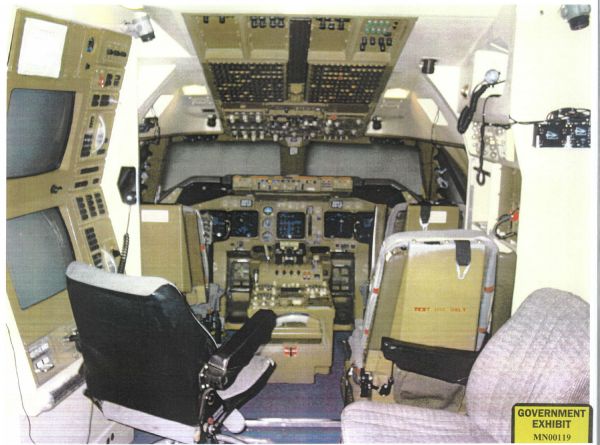
Flight simulator used by Moussaoui
The next day, agents arrested Moussaoui on an immigration violation--mainly as a way of keeping him out of circulation until they could determine what he was up to. In questioning at the time of his arrest, Moussaoui denied being the member of a terrorist organization and said that he was not taking flight training with the intention of killing Americans. Instead, he told them that he was learning to fly for his personal enjoyment--and that he hoped to visit New York City and Washington D.C. as a tourist.
Checking Moussaoui's name with foreign intelligence agencies, agent Harry Samit of the Minneapolis Office learned that Moussaoui might have terrorist connections. The Office immediately began what would be a frustrating--and ultimately unsuccessful--effort to convince the F.B.I. in Washington, whose approval was necessary, to launch a full-scale investigation including a search of Moussaoui's computer records and possessions. Samit later described the refusal of his superiors to allow the search "criminal negligence." Finally, Samit developed a plan to deport Moussaoui to France, where French officials would then conduct a search of his belongings after he landed in Paris. On September 11, Samit drove to his office in Minneapolis intending to spend the day making final plans for Moussaoui's deportation.
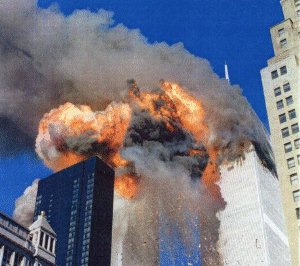
At 8:48 A.M. EDT on September 11, American Airlines Flight #11 crashed into the north tower of the World Trade Center in New York City. Fifteen minutes later a second plane, United Airlines Flight #175 crashed into the south tower of the WTC. Approximately 2,830 people died as the result of the crashes, most following the total collapse of the twin towers. Thirty-four minutes after the second strike in New York, American Airlines Flight #77, bound from Virginia to Los Angeles, crashed into the Pentagon, killing 189 people. Finally at 10:03 A.M., United Airlines Flight #93 crashed in Somerset County Pennsylvania after passengers fought hijackers for control of the doomed plane. All on board died.
Needless to say, the tragedy of September 11 quickly convinced previously reluctant F.B.I. officials in Washington to authorized the search of Moussaoui's possessions that the Minneapolis Office had spent three weeks pushing for. The search turned up--among other things--Leatherman knives, body protection gear, and a handwritten note by Moussaoui that listed the phone number of an Al Qaeda cell member in Germany who handled financial arrangements in the United States for the 19 hijackers.
Pre-Trial Maneuvering
After September 11, the question for the Bush Administration was not whether to prosecute Zacarias Moussaoui, but rather where. The Administration asserted that it had the right to try Al Qaeda operatives as "enemy combatants" before special commissions, rather than in an a regular court where defendants would enjoy the full range of constitutional protections spelled out for defendants in criminal jury trials. In the end, however, the Administration decided to try Moussaoui in federal district court, probably because he--unlike other captured Al Qaeda member--was in the United States and some of the charges against him--lying to a federal officer, for example--seemed relatively easy to prove beyond a reasonable doubt. In announcing Moussaoui's indictment exactly two months after the catastrophic attacks of September, F.B.I. Director Robert S. Mueller said, "The indictment we are announcing today is an important step in the process of bringing to justice those who we believe to be connected to these violent and vicious attacks on America." The case was assigned to Federal Judge Leonie Brinkema.
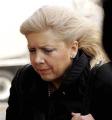
Judge Leonie Brinkema
After the case was assigned to Federal Judge Leonie Brinkema, it would be over four years before Moussaoui would finally see his day in court. The reasons for the long delay were many. They included Moussaoui's insistence that he be allowed to represent himself--and all the trouble that caused, finally resulting in Judge Brinkema's order that the case proceed with court-appointed lawyers. Another long delay resulted from the Department of Justice's refusal to allow Moussaoui to interview detained Al Qaeda leaders as potential witnesses. Judge Brinkema initially decided to penalize DOJ's refusal by eliminating the possibity of the death penalty, but that decision was overturned by a federal appeals court, and in March 2005 the Supreme Court refused to hear Moussaoui's appeal of that decision.
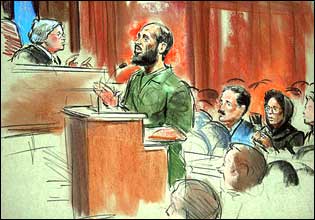
Moussaoui enters a plea of guilty
In April 2005, Moussaoui sent Judge Brinkema a letter stating that he wished to plead guilty. The judge found Moussaoui mentally competent to make such a plea, and accepted it. As a result of Moussaoui's pleading guilty to lying to federal agents, the only decision left for trial was the sentence. Should the defendant die--or should he live? Judge Brinkema set the trial to proceed in two stages. In the first stage, jurors would determine whether the government proved beyond a reasonable doubt that Moussaoui's lies caused the death of one or more persons on September 11, 2001. If they did, then Moussaoui would be eligible for the death penalty and a second stage of the trial would take place. In the second stage, jurors would weigh evidence of mitigating factors presented by the defense, and evidence of aggravating factors presented by the prosecution, and make a final decision as to whether Zacarias Moussaoui should be executed.
The Trial--Phase 1: Is Moussaoui Eligible for the Death Penalty?
Attorneys delivered opening statements in the first phase of the trial on March 6, 2006 in the Alexandria, Virginia courtroom of Judge Brinkema. Prosecutors told the jury that had Moussaoui not lied to investigators in Minnesota in August 2001, the loss of thousands of lives could have been prevented. U. S. Attorney Robert Spencer insisted that the defendant "killed the 9/11 victims as surely as if he had been at the controls in one of those airplanes." Spencer said Moussaoui was "in the thick of the plot" and that he chose "to lie so his Al Qaeda brothers could go forward." Edward J. MacMahon, the court-appointed lawyer for the defense, described his client as a small fish in the operation who was considered unreliable even by his Al Qaeda associates: "You can't judge him to get revenge for 9/11. You can't make him a substitute for Osama bin Laden. And you can't make him a scapegoat for what government officials did not do." MacMahon argued that incompetence in the Washington headquarters of the F.B.I. following Moussaoui's arrest--not his client's lies--was the real cause of the September tragedy. "No one should be executed on such flimsy evidence," MacMahon told the jurors, "not even a member of Al Qaeda." At six remote viewing locations on the East Coast, relatives of the 9/11 victims watched the opening statements on closed circuit television, then left their sites to face reporters, anxious to learn their reaction to the day's proceedings.
The first round of prosecution witnesses presented testimony designed to show that Moussaoui's actions in the United States closely followed the pattern set by other hijackers. He enrolled in flight classes, he bought short knives, worked out, and bought books about airplane operations. Sitting about ten feet from her son during the opening testimony sat Aicha el-Wafi, the mother of Moussaoui. "For me, he is another Zacarias," she told reporters. "I'm his mother and I still love him." Moussaoui, for his part, refused to acknowledge the presence of his mother, who he had not seen or spoken to in years. She seemed devastated by her son's reaction, finally fleeing the courthouse following a recess and falling to her knees in sobs.
Minneapolis F.B.I. agent Harry Samit, although a witness for the prosecution, might have done more harm than good to the government's case. While Samit testified that Moussaoui's lies sent him "on a wild goose chase" until September 11, he refused to say for sure that but for the defendant's lies, the 9/11 attacks could have been prevented. If Moussaoui told the truth, Samit said, "I would have asked additional questions about his role in Al Qaeda and his relation to Osama bin Laden. It would have opened up a whole world of questions." But would those additional questions have persuaded his superiors to act--and act fast enough? On cross-examination, Samit testified that senior F.B.I officials in Washington repeatedly rebuffed his efforts to get a search warrant. They "took a calculated risk not to advance the investigation," Samit said, and "the wager was a national tragedy." He admitted that there was no way to be sure that warrants would have been approved in time to prevent 9/11 even if Moussaoui had not lied.
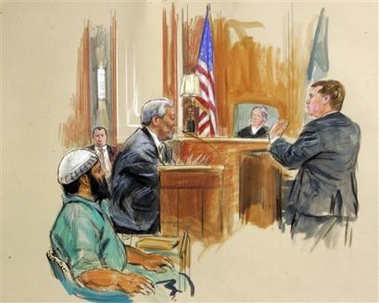
Moussaoui listens to witness testimony
The trial of Zacarias Moussaoui almost came to a sudden end when, on March 13, Judge Brinkema learned that a lawyer for the Transportation Security Administration, Carla J. Martin, had been coaching witnesses in direct violation of the judge's order. Martin had e-mailed seven T.S.A. witnesses, who were scheduled to present key evidence about possible government security measures that could have been enacted to prevent 9/11, to be careful to avoid creating "a credibility gap" and suggested ways in which they might tailor their testimony to avoid that problem--one which Martin said had befallen an earlier prosecution witness. "In all my years on the bench," Judge Brinkema lectured government lawyers, "I've never seen a more egregious violation of the rule about witnesses." Although sorely tempted to dismiss the proceedings and sentence Moussaoui to life in prison--the actions, she said, made it "very difficult for this case to go forward"--, Judge Brinkema said she did "not want to act precipitously," so she sent the jury home to allow herself time to think about an appropriate punishment for the misconduct. After holding a hearing on the matter (during which Brinkema also accused Martin of "a bald faced lie"), the judge decided not to dismiss the prosecution case. Instead, she barred testimony by any of the seven tainted aviation witnesses and allowed the case to proceed. Moussaoui didn't seem terribly disappointed by the judge's decision. As he left the courtroom the defendant shouted, "The show must go on!"
Scrambling to find a way to fill the hole left by the judge's order barring testimony from T.S.A. witnesses, the prosecution found an able witness who could address aviation security issues, Robert J. Cammaroto. Cammaroto, a senior aviation security official, testified that the government --had it known about the terrorist threat--quickly could have put several measures that might have prevented the 9/11 tragedy. Among the measures suggested by Cammaroto were banning all knives, moving air marshals from international to domestic flights, making metal detectors more sensitive, and ordering pat-downs of more passengers. Some of these steps, the witness said, could have been put in place within hours.
F.B.I. agent Aaron Zebley also bolstered the prosecution's argument that had Moussaoui not lied 9/11 would have been preventable. Zebley testified that the name of the man in Germany who wired Moussaoui money for his flight classes would have likely led investigators to many of the 9/11 hijackers and an unraveling of the plot.
The defense began presenting its case on March 23. Essentially, the defense tried to portray Moussaoui as "out of the loop" and unlikely to have been able to provide the information necessary to have stopped the 9/11 disaster--especially given the F.B.I.'s inability to quickly identify and respond to threats. The defense strategy, however, almost was blown out of the water by an unlikely source--the defendant himself. Testifying against his own attorney's wishes, Moussaoui stunned those in the courtroom by testifying that Al Qaeda officials assigned him and would-be shoe bomber Richard Reid (arrested on a flight from Paris to Miami in December 2001) the task of hijacking a plane and flying it into the White House. (A month later, prosecutors conceded that evidence did not support a link between Mousssaoui and Reid.) Moussaoui told jurors that he lied to investigators in Minnesota because he believed in the terrorists' cause. "You lied so the plan could go forward?" asked U. S. Attorney Robert Spencer. "That's correct," the defendant replied. Moussaoui said he "definitely" knew the World Trade Center was targeted for attack, although "I didn't know the details of this." In what suggested to some a suicide wish, Moussaoui told jurors that he stood by an earlier comment in which he called video of the burning twin towers "gorgeous." In a matter-of-fact way he described his delight at hearing the recorded voice of a flight attendant pleading with hijackers for her life. The defendant--wearing a green prison suit and a white knit cap--seemed almost indifferent to his fate, testifying: "I believe in destiny. I just speak the truth--God will take care of the rest."
Defense lawyers tried to undo the damage done by Moussaoui by presenting evidence that came in the form of "substitutions for testimony" coming from captured terrorists held in U.S. facilities overseas. Sheikh Mohammed statement was introduced to show that knowledge of 9/11 was limited to a handful of Al Qaeda leaders--certainly not including Moussaoui, who Sheikh Mohammed considered unreliable and unstable. The defense recited a statement by another terrorist, captured in South Asia in 2003, who accused Moussaoui of being "not right in the head" and "having a bad character." Other recited statements--from an Al Qaeda travel planner and from a person the government suspected was the real "twentieth hijacker" (an Al Qaeda detainee at Guantanamo)--supported the defense argument that the defendant was not part of the 9-11 plot.
Perhaps the most effective defense evidence came in the form of a videotape played for the jury showing Thomas J. Pickens, acting director of the F.B.I. at the time of the attack. Asked whether 9-11 would have been prevented if he knew: (1) Moussaoui was taking flying lessons, (2) that two Al Qaeda terrorists were loose in the country, and (3) that substantial numbers of Middle Eastern men were enrolling in American flight schools and might be part of a hijacking plot, Pickens hesitated. "I don't know," the acting director testified, "with all the information that the F.B.I. collects, whether we would have had the ability to hone in specifically on those three items."
Jury deliberations on the eligibility of Moussaoui for the death penalty began on March 29. They returned to the Alexandria courtroom six days later with their decision. Moussaoui sat silently--possibly praying--as the verdict was announced: the defendant, the unanimous jury concluded, deliberately lied to government agents and his lies were responsible for deaths that occurred on 9/11. With this announcement, Moussaoui became eligible to be executed. As the defendant left the courtroom he shouted, "You will never get my blood!"
The Trial--Phase 2:
Is it Death or is it Life--Weighing Aggravating and Mitigating Factors
The same jurors that found Moussaoui death-eligible in phase one of the trial faced the question in phase two whether the defendant should, given the various aggravating and mitigating factors established by the evidence, in fact be executed. Almost all commentators predicted that the jury would find that he should.
In his opening statement, Robert Spencer warned jurors that what they would experience over the next few weeks "will be painful and emotional to hear, but it will be necessary." They would hear the stories of loss by relatives of victims; hear of the daily struggles of seriously injured survivors; see images that would trouble them.
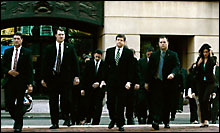
Prosecution team in the Moussaoui trial
Rudolph W. Giuliani took the stand as a star witness for the prosecution in the second phase of the trial. The former mayor of New York City described for jurors his minute-by-minute thoughts as that terrible September day unfolded. He confided that he was still troubled by his memory of watching two people--hand-in-hand--jump out of an upper story window of the Trade Center to their deaths on the pavement below. "That image comes back to me every day," he said.
Moussaoui, usually unemotional during the trial, perked up and smiled broadly when the prosecution presented video clips showing the collapse of the World Trade Center. Leaving the courtroom that day, the defendant sung, using the tune from Bruce Springsteen's "Born in the U.S.A," his own version: "Burn in the U.S.A."
Some of the testimony presented by prosecution witnesses left spectators sobbing or choking back tears. They listened as Mike Low testified that "in a way my life stopped" on 9/11 when he learned of the death of his daughter, a flight attendant for American Airlines. They heard the tragic story told by Chandrasekar Salashidr, who testified that his sister hanged herself after losing her husband, a passenger on one of the hijacked planes. They empathized with C. Lee Hanson, who was on the phone with his son as the plane his son was on crashed into the Trade Center. "Don't worry, Dad. If it happens, it will be quick," his son tried to assure him. Then: "Oh my God! Oh my God! Oh my God!"--and silence on the line.
Once again, on April 13, Moussaoui himself became the prosecution's best witness. In a scene that had to be one of the strangest moments in a very strange trial, Prosecutor Robert Spencer rose to object that defense attorney Gerald Zerkin was badgering the witness in his examination of his own client. Asked if he knew who Timothy McVeigh (the convicted Oklahoma City bomber) was, Moussaoui answered: "Yes sir, Timothy McVeigh, the greatest American." Despite not winning much sympathy from the jury, Moussaoui did raise some doubts about his own mental state, as when he insisted during cross-examination that President Bush would pardon him and he would return to London. The vision of the presidential pardon came to him in a dream, the defendant testified, and "I haven't doubted it for one single second."
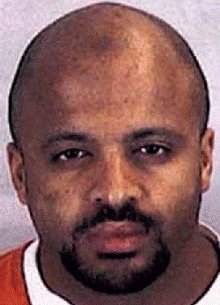
When it came their time to present evidence of mitigating factors, the defense offered witnesses who testified about Moussaoui's unstable childhood. Gilles Cohen, a friend of Moussaoui in France, testified that he and the defendant uses to share long discussions of the Israel-Palestine conflict. Jan Vogelsang, a social worker who interviewed many of Moussaoui's relatives and friends, presented the defendant as the prisoner in a household where his father, a former boxer, often beat his mother and sisters--and even starved them in an effort to control their behavior. Vogelsang also suggested that Moussaoui's path in life was shaped by years of facing anti-Islamic taunts in schools and orphanages and confronting rejection--because of his Moroccan heritage--from the parents of his longtime French girlfriend.
Dr. Xavier Amador, a psychologist, testified that he considered Moussaoui to be suffering from paranoid schizophrenia. Amador pointed to the defendant's delusional belief that George Bush would free him, his contentions that his own lawyers were out to kill him and that the F.B.I. planted a bug in his electric fan, and his hostility--as evidenced by his efforts to spit water on the psychologist during his holding cell interviews--as support for his diagnosis.
The defense concluded its case with an effort to counteract the emotional testimony presented earlier for the prosecution by relatives of 9/11 victims. The defense presented its own slate of relatives of victims--in this case, relatives who believed it was time to "move forward" or show "understanding" and spare the life of Moussaoui. Marilynn Rosenthal, whose son Josh died in the collapse of the World Trade Center, told jurors that she wanted to avoid getting "caught up in a whirlpool of sadness and frustration and anger" over her son's death. (Later, talking to reporters outside the courtroom, Rosenthal described Moussaoui as "a marginal figure," and criticized the Bush Administration for not putting on trial the Al Qaeda members it held that bore greater responsibility for 9/11.)
Attorneys delivered closing arguments in the case of the United States vs. Moussaoui in Monday, April 24, 2006. Prosecutor David Raskin argued in support of a death sentence. "There is no place on this earth for Zacarias Moussaoui," he told jurors. Federal public defender urged jurors to "show some courage" and spare his client's life. This trial, he said, "is more about us than it is about him."
One Juror Stands Firm for Life
Twelve jurors deliberated the fate of Zacarias Moussaoui. Judge Brinkema gave them a 42-page verdict form asking for their conclusions regarding 26 aggravating and 23 mitigating factors proposed by the prosecution and the defense. The form required a full hour of explanation.
On May 3, the jury forewoman, a public school mathematics teacher, handed the verdict form to Judge Brinkema, who read: "We the jury do not unanimously find that a sentence of death should be imposed on the defendant." Moussaoui--much to the surprise of most gathered in the courtroom--would live.
The defendant, saying he was equally surprised at the fairness shown by the jury, filed a motion to withdraw his guilty verdict and have a full trial. Judge Brinkema denied the motion. Within a few days of the verdict, authorities transferred Moussaoui to the federal government's "Supermax" prison in Florence, Colorado.
Seven mitigating factors earned the support of at least three jurors. The greatest number, nine, accepted that his "unstable early childhood" and "home life without structure and emotional or financial support," as well as his father's "violent temper," were mitigating factors. Lesser numbers cited psychotic illness within his family and the racism he endured in schools and orphanages. Only three jurors concluded that 'his limited knowledge of the 9/11 attack plans" or his "minor role, if any" in 9/11 should be considered mitigating factors.
Interviews after the verdict with the jury forewoman revealed how close to death Moussaoui came. On several anonymous ballots, she reported, only one unknown juror held out for life.
Conservative commentator Charles Krauthammer wrote in support of the jury's conclusion. He had, however, nothing but ridicule for the jury's reliance on Moussaoui's dysfunctional family as the primary mitigating factor: "You read that jury form and you despair for your country. Have we sunk so low? So Moussaoui had a tough childhood. I'm sure Pol Pot's [of Cambodia's killing fields] was no bed of roses either. Who gives a damn?" Instead, Krauthammer wrote, Moussaoui's life deserved sparing because the death penalty should be reserved for truly heinous felons. He quoted the Talmud which says a high court "that executes a person once in seven years is considered murderous." Moussaoui was "a foot soldier in an army of evil who never got a chance to practice his craft. That warrants life, not hanging."
On May 23, 2006 the world heard another commentator weigh in on the Moussaoui verdict. From somewhere in Asia, Osama bin Laden released a videotape to "the American people" in which he said Moussaoui had "no connection whatsoever" with September 11. "I was responsible for entrusting the 19 brothers, Allah have mercy upon them, with those raids," the Al Qaeda leader asserted. Moussaoui, he added, was "only learning to fly."
One question lingers after all the tears, shouts, and recriminations that accompanied the only criminal trial involving September 11: Was it worth it? Was it worth the millions of dollars the government spent to try to execute an Al Qaeda small fry when, if the government did nothing but accept his guilty plea, Mousaaoui would have spent his life in prison, just as he will do now? The government never before has tried to put to death someone whose crime was one of omission, not commission. The voices in the courtroom of World Trade Center victims making 9-1-1 calls from World Trade Center, the playing of the cockpit tape of the doomed United flight, the emotional testimony from victims and relatives of victims: Did it all help bring closure?--or did it just rub the wounds that will never heal? On that big question, the jury is still out.
